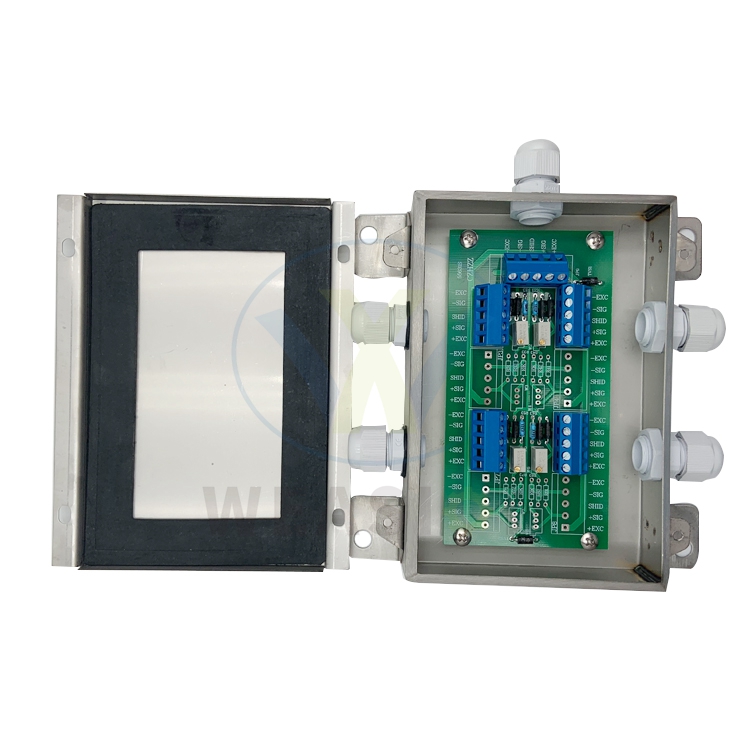Functions of a load cell junction box
2024-01-05
A load cell junction box is a device used in weighing systems to consolidate and manage the electrical connections between multiple load cells and the weight indicator or controller. Load cells are sensors that measure force or weight, and they are commonly used in various applications, such as industrial weighing systems, scales, and batching systems. The junction box plays a crucial role in ensuring accurate and reliable measurements by providing a centralized point for connecting load cells and facilitating the transmission of signals to the weighing instrument.
Key features and functions of a load cell junction box include:
1. Consolidation of Wiring:
- Load cells are typically arranged in a configuration where multiple cells contribute to the overall weight measurement. A junction box consolidates the wiring from these load cells into a single location.
2. Electrical Connections:
- The load cell junction box includes terminals or connectors for each load cell, allowing their electrical signals to be easily connected and routed to the appropriate channels.
3. Signal Conditioning:
- Some load cell junction boxes may include circuitry for signal conditioning. Signal conditioning involves adjusting and optimizing the electrical signals from load cells for better accuracy and performance.
4. Summation Circuit:
- In applications where multiple load cells contribute to the total weight measurement, the junction box may include a summation circuit. This circuit sums the individual load cell signals to provide a combined weight signal.
5. Shielding:
- Load cell signals are sensitive to electromagnetic interference. The junction box is often designed with proper shielding to protect the signals from external interference, ensuring accurate and stable measurements.
6. Weatherproofing:
- In outdoor or industrial environments, load cell junction boxes may be designed to be weatherproof or waterproof, protecting the internal components from environmental conditions.
7. Grounding:
- Proper grounding is essential for accurate and stable measurements. Load cell junction boxes often include grounding points to ensure a reliable ground connection for the entire system.
8. Ease of Installation:
- Junction boxes are designed to facilitate easy installation. They may include features such as mounting holes or brackets for secure attachment to the weighing system or structure.
9. Compatibility:
- Load cell junction boxes should be compatible with the specifications and requirements of the load cells and weighing indicator/controller being used in the system.
10. Maintenance Access:
- Some junction boxes are designed with removable covers or panels to allow for easy access during maintenance or troubleshooting activities.
11. Diagnostic Features:
- Advanced load cell junction boxes may include diagnostic features such as LED indicators or communication ports for monitoring the health and status of the load cells and the overall weighing system.
Load cell junction boxes contribute to the overall reliability and accuracy of a weighing system. They simplify the wiring process, enhance signal integrity, and provide a centralized and organized solution for load cell connections. When selecting a load cell junction box, it's important to consider the specific requirements of the application and ensure compatibility with the components of the weighing system.



